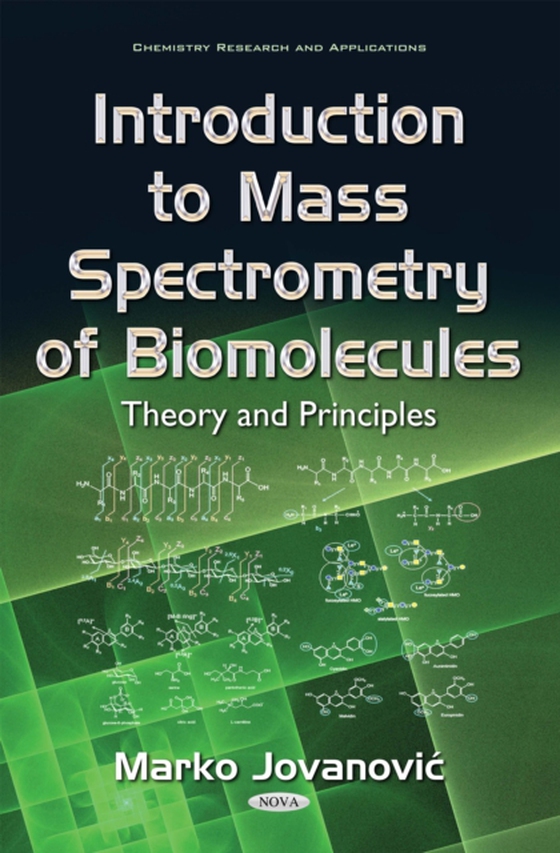
Introduction to Mass Spectrometry of Biomolecules: Theory and Principles e-bog
2921,57 DKK
(inkl. moms 3651,96 DKK)
These lectures give an introduction to principles of mass spectrometry related to analysis of biomolecules. The book is focused on MS and MS/MS analysis of peptides, oligosaccharides, lipids, glycoconjugates and polyphenols. The basic properties of modern MS ionization techniques and mass analyzers are presented, as well as MS methods appropriate for analysis of each class of biomolecules in mo...
E-bog
2921,57 DKK
Forlag
Nova
Udgivet
1 maj 2018
Længde
299 sider
Genrer
Spectrum analysis, spectrochemistry, mass spectrometry
Sprog
Format
pdf
Beskyttelse
LCP
ISBN
9781634851428
These lectures give an introduction to principles of mass spectrometry related to analysis of biomolecules. The book is focused on MS and MS/MS analysis of peptides, oligosaccharides, lipids, glycoconjugates and polyphenols. The basic properties of modern MS ionization techniques and mass analyzers are presented, as well as MS methods appropriate for analysis of each class of biomolecules in modern scientific research. The biggest part of the book is focused on MS/MS analysis of biomolecules; how the MS and MS/MS data are generated and what are the basic strategies for their structural analysis. The book also covers principles and examples of advanced MS/MS analyses, serving as a platform towards intermediate level of understanding of scientific research carried out in the field of structural MS analysis of biomolecules. Nevertheless they will be covered only briefly here, and for further information on advanced topics of interest, the reader is encouraged to study the primary scientific literature. These lectures were written for newcomers to the MS field. In order to better understand the material presented, this book is accompanied by "Introduction to Mass Spectrometry of Biomolecules: Problems and Practical Aspects“, where many practical aspects were considered. This book is focused on MS data analysis. By learning how to interpret MS data, many theoretical aspects presented in "Introduction to Mass Spectrometry of Biomolecules: Theory and Principles“ will be better understood. Furthermore, these books complement each other and are meant to be read together for maximum benefit. After studying the material presented in both books, the reader will gain basic understand of the following MS-related terms: MALDI, ESI, monoisotopic mass, isotope distribution, resolution, accurate mass measurement, quadrupole, time of flight, ion trap, MS mapping, MS/MS sequencing and structural analysis, MSn analysis, precursor ion scan, neutral loss scan, single reaction monitoring and multiple reaction monitoring. More importantly, the reader will know importance of all these terms for analysis of peptides, oligosaccharides, glycoconjugates, lipids and polyphenols. In the end, it is my hope that the reader will be able to understand principles of MS analyses related to their scientific and/or analytical interest, as well as design/help design MS and MS/MS experiments, as well as interpret the obtained data.
 Dansk
Dansk

